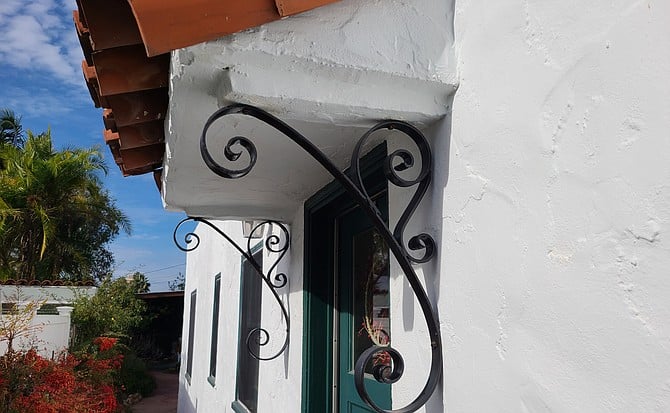 Facebook
Facebook
 X
X
 Instagram
Instagram
 TikTok
TikTok
 Youtube
Youtube

Flash forward eight years to a couple of months ago. Harry L. and Keria Rogers jump into my mind as Lynne and I are poking through one of my old family lines on Ancestry. I diverge from the family records to run a search for our house in the 1930 San Diego census and, lo and behold, there are the two lines filled with the Rogers’ information at our address. One of the interesting things about U.S. censuses is that the earliest ones (we’re talking 1790 as the earliest) contained next to nothing in the way of names or details.
But each census became progressively more detailed as the years went by, and by the 1900s one can draw a pretty complete picture of all the residents in any living quarters. Not only can you see who resided there, but what those people did for a living, how much money they paid in rent or how much they felt their house was worth at the time, where they were born, where their parents were born, etc.
There were no real surprises about Harry and Keria in the 1930 census except for the fact that they valued our house at $12,000, which I thought seemed high for the time. I figured that since they had just bought the house the year before, that’s probably what they paid for it. The surprises, though, showed up in my next file dive, the 1940 census. The first surprise was that the Rogers were living there again. So, where had they disappeared to during the previous 10 years while their renters lived at our house?
As I contemplated that, my eyes floated to the next surprise, a very helpful census column that hadn’t been included in any previous census—to ask where the resident had been living five years earlier (1935). Harry and Keria listed “Brooklyn, NY”. Really? Harry was in the Navy, so I assume he had been reassigned there. And that would explain the renters in our house. But now it felt good to have Harry and Keria back home again in 1940.
One final surprise in the 1940 document was the owners’ stated value of our home. According to the Rogers’, the value had dropped by more than half from that of 1930. Only $5,000 now, seriously? I realized the Depression would have hit U.S. real estate very hard, but that must have been a major gut-punch. I Googled to check the U.S. average house prices value between 1930 and 1940 and felt oddly relieved to confirm that our house had plummeted by a proportional amount. Whew! So, where to next?
Next week – Part 3: Buried at Ft. Rosecrans with Russian bride
To read Part 1: Who owned our house on Richmond Street? Click here.


Flash forward eight years to a couple of months ago. Harry L. and Keria Rogers jump into my mind as Lynne and I are poking through one of my old family lines on Ancestry. I diverge from the family records to run a search for our house in the 1930 San Diego census and, lo and behold, there are the two lines filled with the Rogers’ information at our address. One of the interesting things about U.S. censuses is that the earliest ones (we’re talking 1790 as the earliest) contained next to nothing in the way of names or details.
But each census became progressively more detailed as the years went by, and by the 1900s one can draw a pretty complete picture of all the residents in any living quarters. Not only can you see who resided there, but what those people did for a living, how much money they paid in rent or how much they felt their house was worth at the time, where they were born, where their parents were born, etc.
There were no real surprises about Harry and Keria in the 1930 census except for the fact that they valued our house at $12,000, which I thought seemed high for the time. I figured that since they had just bought the house the year before, that’s probably what they paid for it. The surprises, though, showed up in my next file dive, the 1940 census. The first surprise was that the Rogers were living there again. So, where had they disappeared to during the previous 10 years while their renters lived at our house?
As I contemplated that, my eyes floated to the next surprise, a very helpful census column that hadn’t been included in any previous census—to ask where the resident had been living five years earlier (1935). Harry and Keria listed “Brooklyn, NY”. Really? Harry was in the Navy, so I assume he had been reassigned there. And that would explain the renters in our house. But now it felt good to have Harry and Keria back home again in 1940.
One final surprise in the 1940 document was the owners’ stated value of our home. According to the Rogers’, the value had dropped by more than half from that of 1930. Only $5,000 now, seriously? I realized the Depression would have hit U.S. real estate very hard, but that must have been a major gut-punch. I Googled to check the U.S. average house prices value between 1930 and 1940 and felt oddly relieved to confirm that our house had plummeted by a proportional amount. Whew! So, where to next?
Next week – Part 3: Buried at Ft. Rosecrans with Russian bride
To read Part 1: Who owned our house on Richmond Street? Click here.
Comments